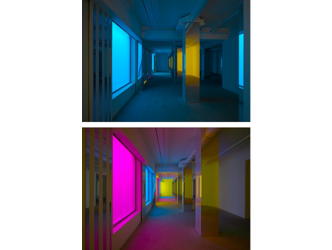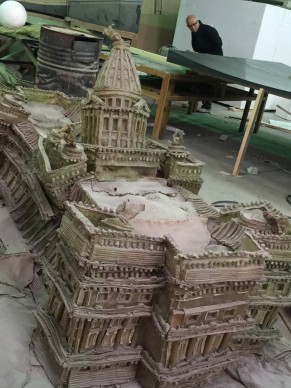
Pointe du Diamant Martinique
Speaking of nations
Land, territory, country. In living memory, from the United States to the Middle East, the Mediterranean to the Channel, politicians have always had on the tips of their tongues these words that speak of nations, of supremacy but also of hope, migrations and also the dead. We must recognize, however, that the sense of belonging to a place is something fundamental to human existence.
Imaginary worlds
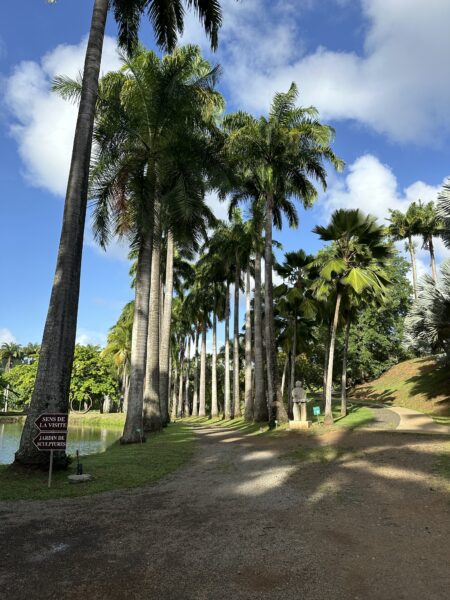
Fondation Clément, Martinique
Between the need for an anchor and for control over space, there are words from poets that shed light on this. They create imaginary worlds that enable us to breathe. They must be listened to if we are to think of the impossible: peace and coexistence. In her extraordinary novel published in French in 1972, “Pluie et vent sur Télumée Miracle”, the Guadeloupean writer Simone Schwarz-Bart writes in the opening lines: “Land all too often depends on the hearts of men: it is miniscule if the heart is small, and immense if the heart is large. I have never suffered from the smallness of my country, while I do not claim to have a big heart. If I were to be given the power, it would be here in Guadeloupe that I should choose to be reborn, to suffer, and to die.”
French Antilles
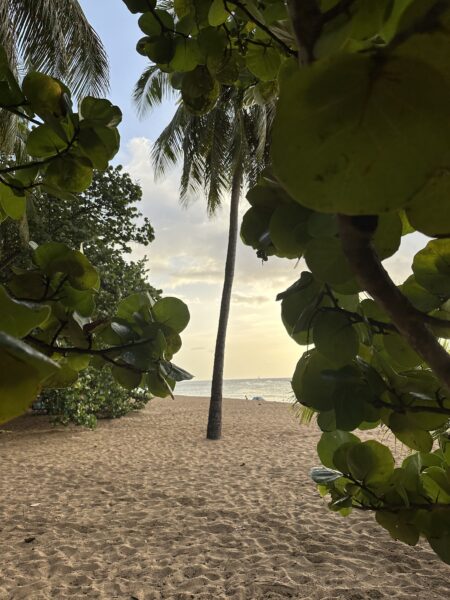
Grande Anse, Guadeloupe
Guadeloupe, like its neighbour Martinique, two islands in the French Antilles which today are overseas departments of the French Republic, have emerged out of a unique situation. While France did not practice slavery on the mainland, it accepted it and even encouraged it across its two colonies. Following the Revolution of 1789 slavery was abolished once in 1794 before being reestablished by Napoleon in 1802.
Joséphine de Beauharnais
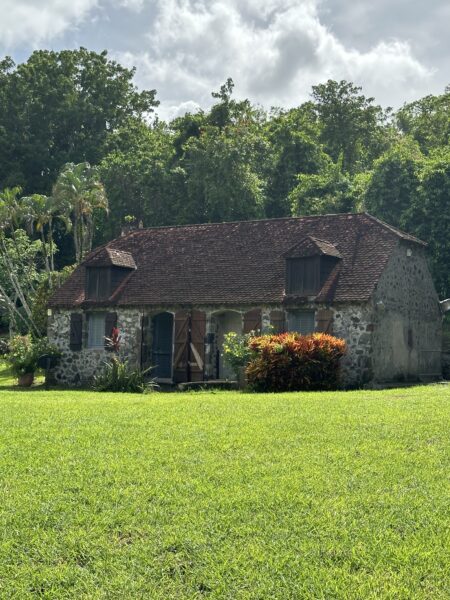
Domaine de la Pagerie, Martinique
The first wife of the man who would go on to become emperor, the flighty Joséphine de Beauharnais, was incidentally a white woman who had been born in Martinique, where you can still visit what is left of the house of her birth, the Domaine de la Pagerie . It wasn’t until 27 April 1848 that slavery was definitively abolished on French soil, followed by the emancipation of the slaves.
Edouard Glissant
Land is a vehicle for memory. I recently visited the French Antilles, following in the footsteps of an extraordinary man of letters, a poet who has helped us to think of the world differently: Edouard Glissant (1928-2011). In the universe of the visual arts, the man behind the rediscovery of Edouard Glissant has been the director of the Serpentine Gallery in London, Hans Ulrich Obrist (HUO), who declares that every morning he spends fifteen minutes reading the poet and philosopher.
Hans Ulrich Obrist
Obrist published a tiny book in English in 2022 for reading in all circumstances, “Edouard Glissant / Hans Ulrich Obrist. Archipelago”, which contains some of his citations. In May 2024 he also published interviews he had conducted with Glissant in French with the Editions du Seuil under the title “Dans un monde imprévisible, l’utopie est necessaire”(In an unpredictable world, utopia is necessary).
Alighiero Boetti
It was through the intermediary of the Italian artist Alighiero Boetti that HUO met Glissant in 1986. “Glissant showed premonition,” explains Obrist. “He created a sort of toolbox for thinking to apply certain principles to daily life. He reasoned according to a principle of archipelization rather than ‘continental masses’. He understood that you had to be local without being a localist. He was an intellectual but he also wanted to create realities.”
By coincidence, towards the end of the conversation while HUO was answering my questions from an airport, his phone shook and, euphoric, he alluded to Glissant’s concept of “trembling thinking”, which nods to bursts of reason.
Mixed world
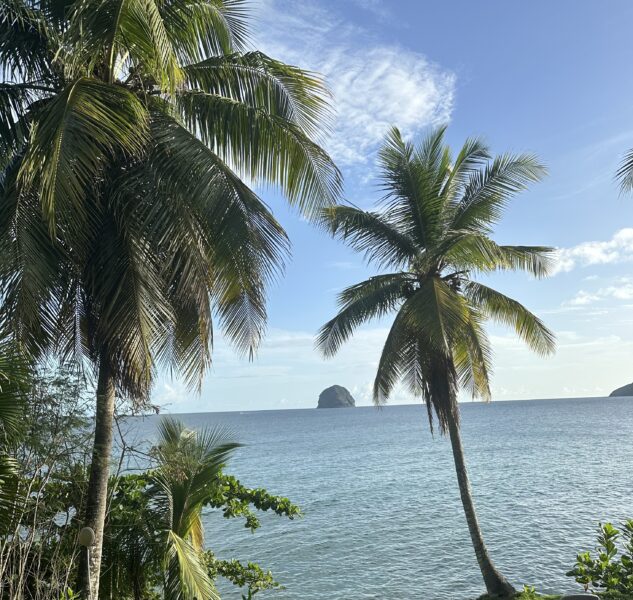
Edouard Glissant’s house, Martinique
The Martinican who taught in New Orleans was the father of a new way of thinking about land and territory.
He peeled back the information on our relationship to the world, examining the different notions of time according to whether we are in the Caribbean or in Europe, the necessity to lay historical data out flat and without taboos, and also to recognize that the world today is the fruit of “mixity”.
Glissant in the Antilles
He writes in his essay “La cohée du Lamentin: “We begin to experience landscapes no longer only as pure, willing decorations, favourable or not, but as true induction machines (…) They take us beyond ourselves, revealing what is inside us.”
La pointe du Diamant
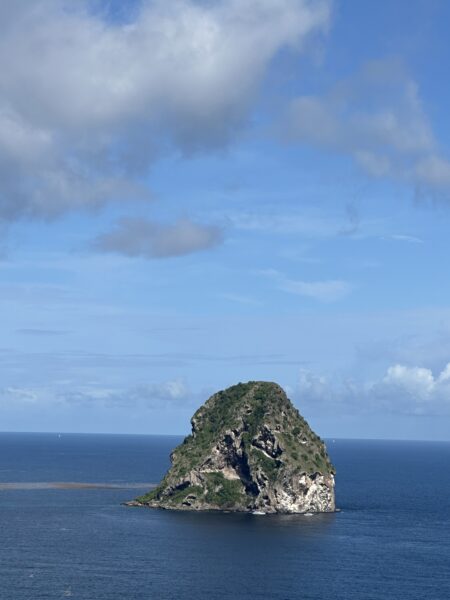
La Pointe du Diamant, Martinique
It was in “La pointe du Diamant” that Glissant was clearly revealed to himself. This is a countryside area by the sea that looks out over an enormous rock rising up from the waves: the Diamond. According to his wife, Sylvie Glissant, the writer loved this place and had a house here, which was both modest – in size – and grandiose in its geographical location. The diamond resembles what the Chinese traditionally called a “dream-stone”, conducive to meditation. We can see this raw and outsized “Diamond” as an imposing, silent and ever-present neighbour.
Anse Caffard
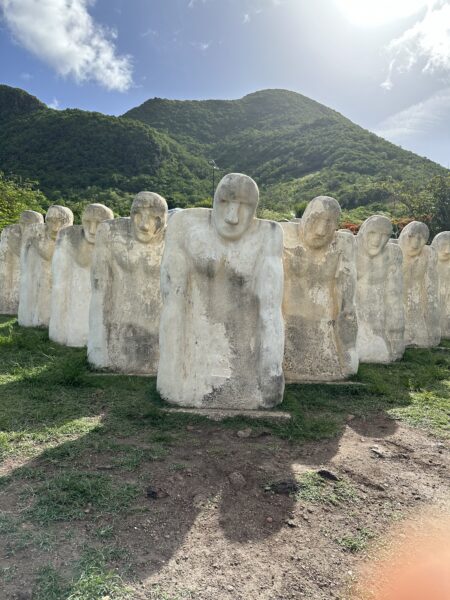
Mémorial de l’Anse Caffard
A few metres away is Anse Caffard, which was also much appreciated by Glissant. Since 1998 it has housed a memorial to recall that in this cove in 1830 a boat sank that was filled with slaves. 46 of the captives died and no one took the trouble to bury them. The Martinican artist Laurent Valère (born in 1959) constructed an impressive mausoleum here made up of a group of massive stone silhouettes, lashed by the wind, and by memories.
Julien Creuzet
Today the Martinican artist who is most prominent on the international scene is Julien Creuzet (born in 1986), who represents France in 2024 at the Venice Biennale, and he also aligns himself with Glissant.
To the point of staging the presentation of his latest projects at the house in Pointe Diamant. He cultivates this idea of exchanges, of melanges and “mixity” in time and space, like in his remarkable film screened in Venice that takes as inspiration a Parisian fountain in the Jardins de l’Observatoire, an illustration of the French colonies, whose images he deconstructs and remodels.
Simone Schwarz-Bart
In Guadeloupe I visited the house of the marvellous Simone Schwarz-Bart and her late husband, André Schwarz-Bart (1928-2006), who won the Goncourt Prize in 1959 for a novel on the holocaust, “Le dernier des justes”.
I waited impatiently to visit the Edouard Glissant collection that is housed in the museum dedicated to slavery, “Le Memorial Acte”. But in vain… No one was available to show me the collection of 120 works, which is ordinarily not accessible to the public.
Roberto Matta, Wifredo Lam
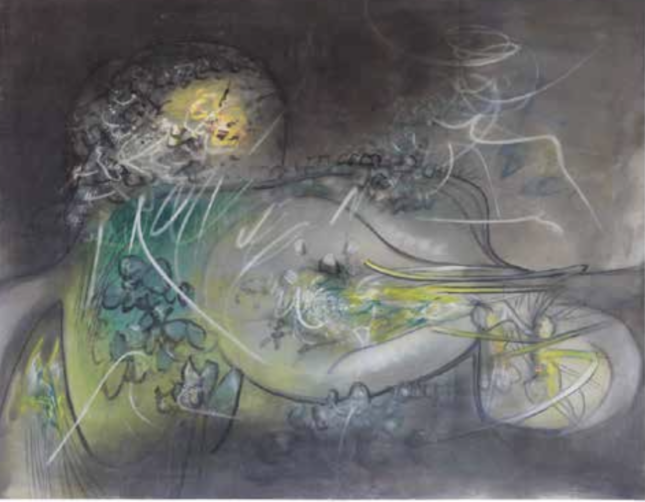
Roberto Matta
Edouard Glissant wanted to build a museum in Martinique. He was just about to consolidate the project before local financial interests put a stop to it.
His collection contains works by, among others, the space-loving surrealist Roberto Matta (1902-2002), the Cuban Wifredo Lam (1902-1982), whose painting he considered to be political in its forms, and the Martinican Victor Anicet (born in 1938), known above all for his ceramic work.
To appreciate is to support.
To support is to donate.
Support JB Reports by becoming a sustaining Patron with a recurring or a spontaneous donation.
Jose Gamara
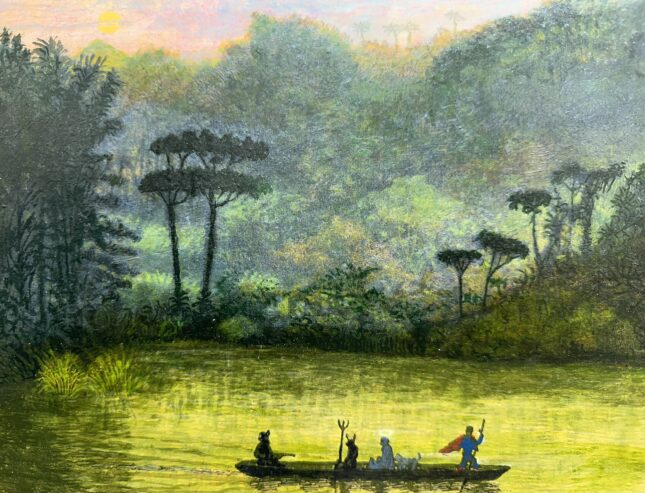
Jose Gamarra
The beautiful Fondation Clément in Martinique is staging an exhibition on Anicet until 27 October. The roll call of Glissant’s collection also features Uruguayan painter José Gamarra (born in 1934) who is behind the disturbing jungle landscapes. Coincidentally he is also the subject of an exhibition at the Renos Xippas gallery in Paris until 12 October. I’ll be writing about this exhibition soon.
Resistance to the Greek statues
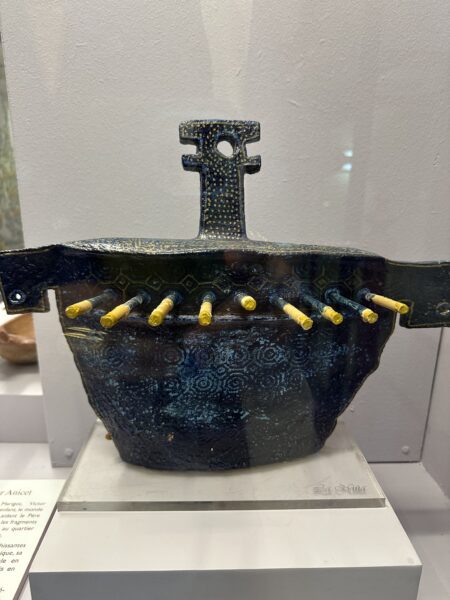
Victor Anicet, musée d’archéologie, Martinique
Glissant spoke about forms conceived by artists he was close to as acts of “resistance to the Greek statues that are imposed as a universal model.” On the world of art galleries he also observed: “the dreadful thing about art galleries now is that there are no more poets.”
To be meditated on…
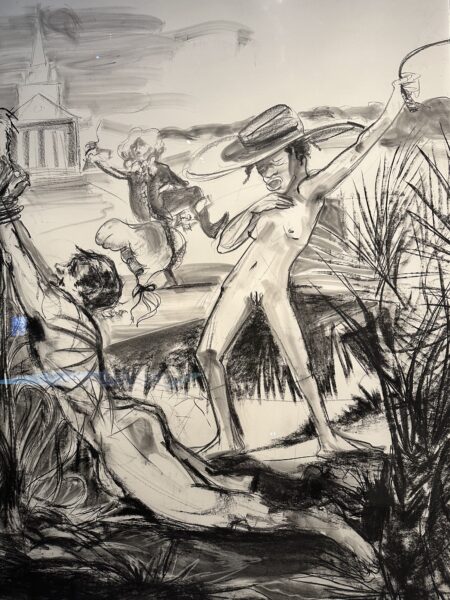
Kara Walker @ Memorial Acte, Guadeloupe
Edouard Glissant quotes:
“The people of Brazil and the Caribbean islands, even the people of Latin-American, their time was stolen. As a consequence we are obliged to reconstitute it chaotically (…) For example for the memory of the Mayan, Aztec, Inca civilizations etc… it is very difficult when we are told “600 years before J.C. or 1000 after J.C.”. That means nothing in the American space-time perspective.” (Martinique and Guadeloupe were original occupied by Amerindian civilizations).
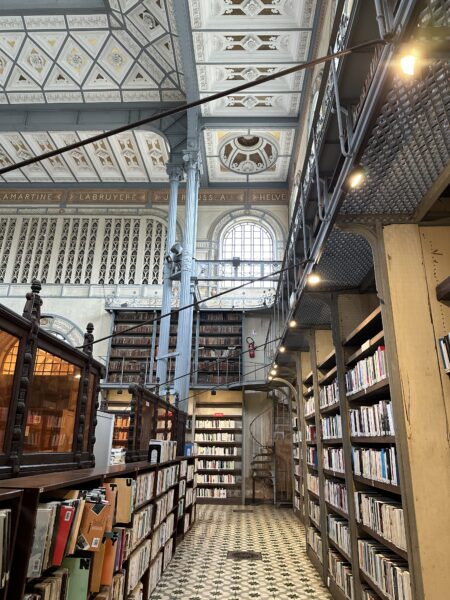
Bibliothèque Schoelcher, Fort de France
“The problem of slavery is a fundamental problem not only for us, the descendants of slaves, but for the descendants of supporters of slavery. My idea is that we must lay history out flat so that, on the one hand, there is no more ignorance, the contempt of indifference or condescension, and on the other hand there is no more rancour, the hatred of powerlessness.”
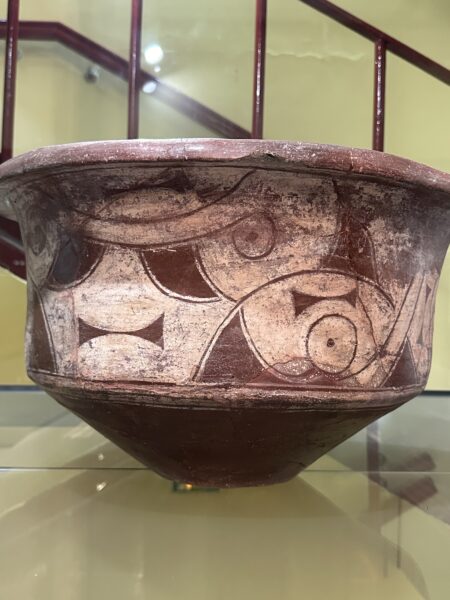
Musée d’archéologie, Fort de France
“Literature and the arts must create a people we are lacking. And for me, utopia is what we are lacking in the world.”
“I can be the author and remain myself today. I do not lose myself if I try to be the other. And if we do that we change the imagination of humanities today. It is the only way to oppose the holocaust, the destruction, the oppression, the domination of imperialism.”
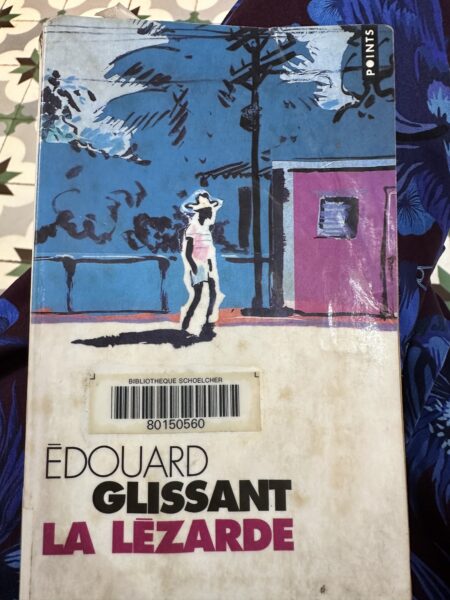
Bibliothèque Scholcher, Fort de France
On creolization: “The world of now is a mixed world. The world is in me and I am in the world. I cannot hope to be alone, pure and eternal in the world that surrounds me, which will be impure, temporal etc. It is not real. The world is mixed.”
On the question of the “tout-monde”: “The very notion of identity has long served as a rampart: a tally of what is one’s own (…) The refrain of the clash of civilizations is lamentable. Civilizations have been meeting one another, brushing up against one another, changing and exchanging with one another consciously or unconsciously for thousands of years (…) The West is in us and we are in it.”
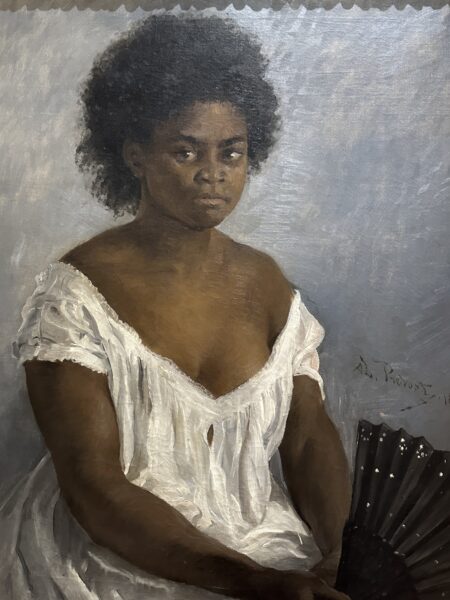
Jeune femme à l’eventail, Charles Prévost. Musée d’histoire et d’ethnographie, Fort de France
To conclude with the question of anchoring:
“We are only able to comprehend the world through a place.”
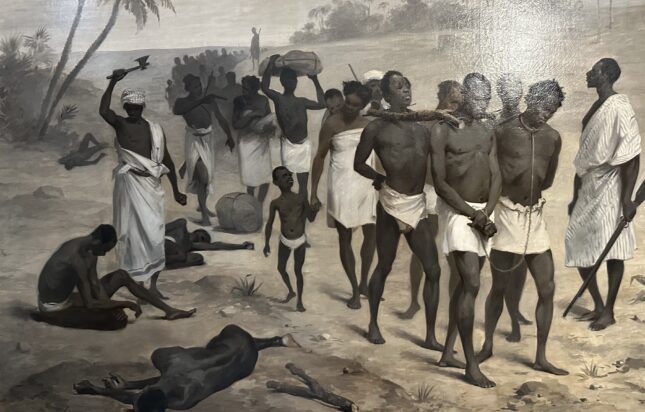
Archives Hans Ulrich Obrist. Edouard Glissant. Dans un monde imprévisible, l’utopie est nécessaire. Ed Seuil Luma
Edouard Glissant. Hans Ulrich Obrist. Archipelago. Ed Common Era.

Musée d’histoire et d’ethnographie, Fort de France
Support independent news on art.
Your contribution : Make a monthly commitment to support JB Reports or a one off contribution as and when you feel like it. Choose the option that suits you best.
Need to cancel a recurring donation? Please go here.
The donation is considered to be a subscription for a fee set by the donor and for a duration also set by the donor.



